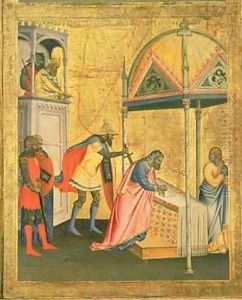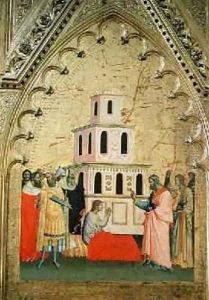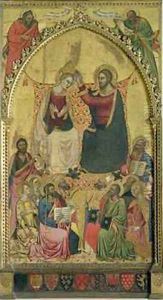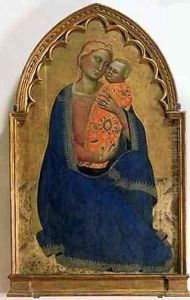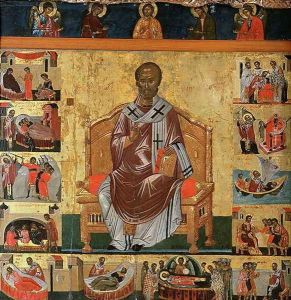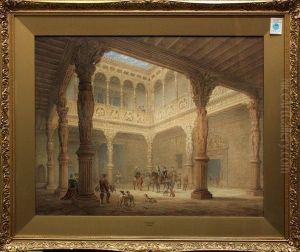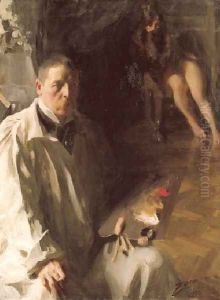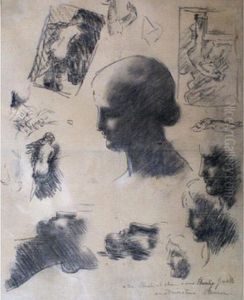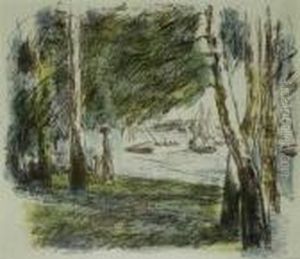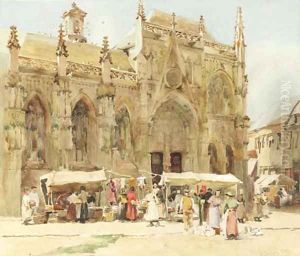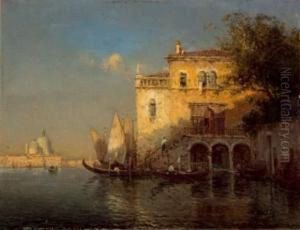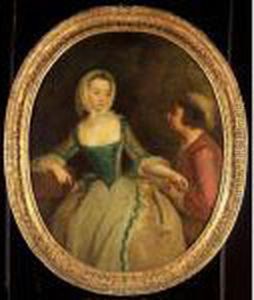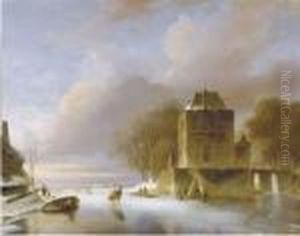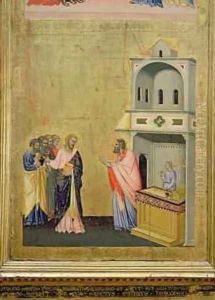





The Calling of St Matthew from the Altarpiece of St Matthew and Scenes from his Life 1367-70
-
About Reproduction
Discover the allure of art with our faithful reproduction of "The Calling of St Matthew from the Altarpiece of St Matthew and Scenes from his Life 1367-70", originally brought to life by the talented Andrea & Jacopo Orcagna di Cione. Unlike posters or prints, our hand-painted oil painting breathes an unique sense of depth and texture into your space. Every detail, every stroke, and every texture is meticulously recreated, paying the perfect homage to Andrea & Jacopo Orcagna di Cione and his artistic vision.
Owning this piece is more than just decoration - it's a statement of your refined taste in art. Let the vibrant colors and intricate details of this replica serve as a daily reminder of the beauty in our world. Elevate your decor and appreciate the richness of art with our replica of this masterpiece.
-
Painting Description
The Calling of St Matthew is a notable component of the Altarpiece of St Matthew and Scenes from his Life, a significant work of Italian Gothic art created between 1367 and 1370 by the brothers Andrea and Jacopo Orcagna di Cione. This altarpiece, originally located in the church of San Matteo in Pisa, is a multi-paneled piece that combines both painted and gilded elements to depict various episodes from the life of St Matthew, the patron saint of the church for which it was commissioned.
The Calling of St Matthew specifically illustrates the moment described in the Gospel of Matthew (Matthew 9:9) when Jesus Christ calls Matthew to follow him, an event that marks the transformation of Matthew from a tax collector to one of Jesus's apostles. This scene is a common subject in Christian art, symbolizing the transformative power of divine call and the potential for redemption.
Andrea di Cione, better known as Orcagna, was one of the most prominent artists in Florence during the mid-14th century, and his work on this altarpiece reflects the transition from medieval Byzantine influences to the more naturalistic styles that would characterize the early Renaissance. His brother, Jacopo di Cione, often collaborated with him, and their combined efforts on the Altarpiece of St Matthew and Scenes from his Life resulted in a work that is both spiritually significant and artistically innovative for its time.
The altarpiece itself is a testament to the brothers' skill in both painting and sculpture, as it features a complex arrangement of narrative panels, ornate Gothic architectural elements, and figures that exhibit a sense of volume and depth. The Calling of St Matthew, as part of this larger ensemble, contributes to the overall storytelling and devotional function of the piece, engaging viewers with its detailed representation and emotional resonance.
Today, the Altarpiece of St Matthew and Scenes from his Life, including The Calling of St Matthew, is recognized as an important example of 14th-century Italian Gothic art. It offers insight into the religious and artistic culture of the period, as well as the technical and stylistic developments that would pave the way for the Renaissance. The altarpiece is preserved and can be viewed in the National Museum of San Matteo in Pisa, allowing contemporary audiences to appreciate the historical and aesthetic significance of this masterpiece.
-
Lead Time & Shipping
When you order this oil painting replica, it typically takes 2-3 weeks to paint. If the artwork is more complex, it might need a little more time to ensure the best quality. Once it's ready, we'll send you a photo for your approval. After you give the green light, we'll ship it to you for free.
-
Return & Refund
We believe in the quality of our hand-painted oil painting reproductions, and your satisfaction is our priority. If for any reason, you are not completely satisfied with your purchase, we offer a 45-day return policy. You can return your artwork within 45 days of receipt and receive a full refund. Please note that the artwork must be returned in the original packaging and in the same condition as it was received.





